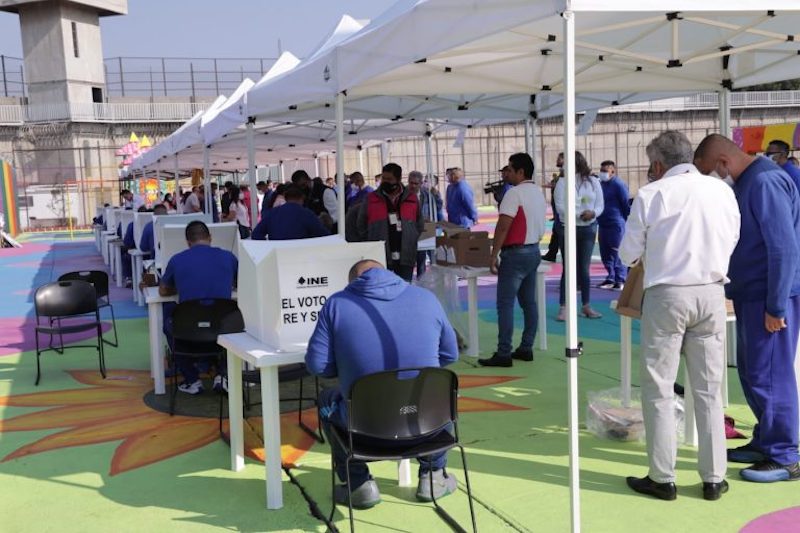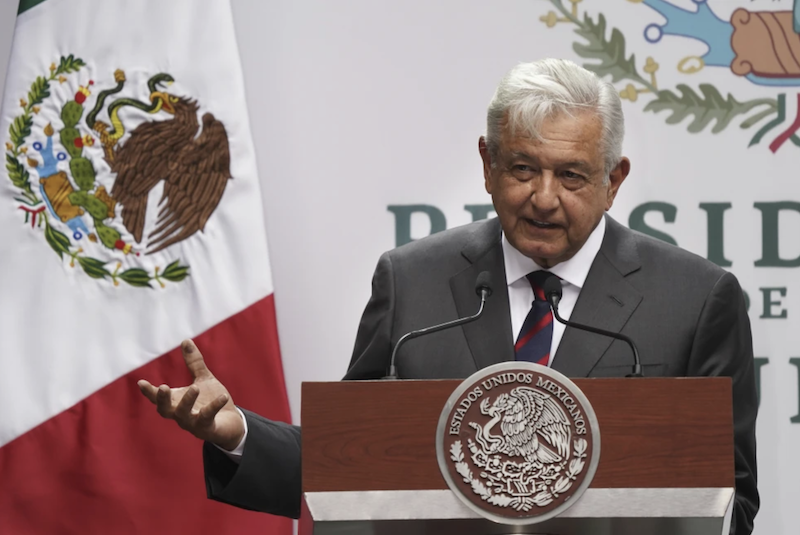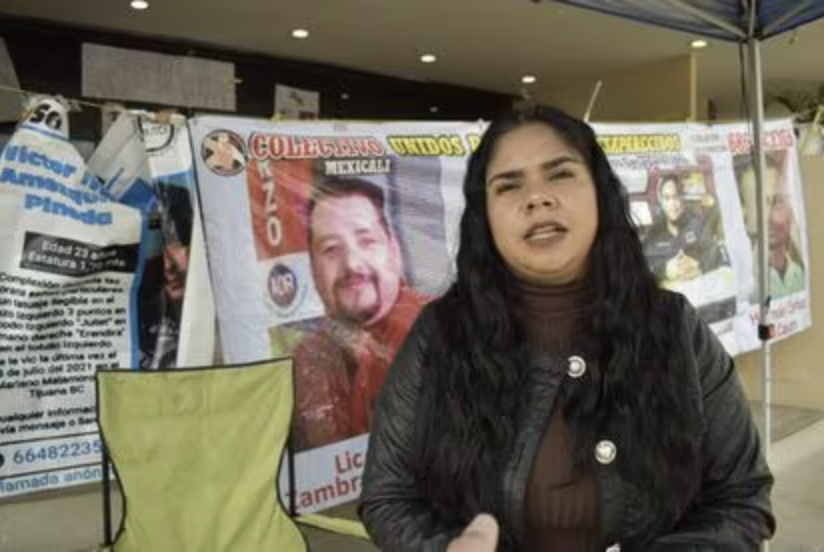01/29/14 (written by petrichk and kheinle) — The disappearance of a Mexican journalist and the recent claims of journalist censorship in the nation’s capital have highlighted the continued vulnerability of the Mexican media. Journalist Zoila Márquez Chiu disappeared December 7, 2013 while on her way to return videos to a local store in Zacatecas. Three weeks later, after a high profile search the journalist reappeared unharmed at her home, but still with no explanation and no reports of a ransom demand. Her disappearance garnered major attention including the creation of a social media campaign backed by 140 reporters and editors demanding her safe return; her employer, Línea Informativa de Zacatecas, stopping their publication in protest; and the governor of Zacatecas ordering a multiagency search for the missing woman. Her reappearance coincided with a press event held by her parents in which they disputed security footage released by the state’s attorney general, Arturo Nahle García. A private expert hired by the couple found that the video did not show their missing daughter but rather a taller, unidentified woman driving Márquez’s missing car.

Márquez, the mother of two, has not spoken publicly about her disappearance, despite her position as a reporter for Línea Informativa de Zacatecas. Her silence has raised questions about the veracity of her kidnapping and if the government is pressuring her into self-censorship. Reporters Without Borders released a statement expressing skepticism of the official report, criticizing its vague reassurances that Márquez suffered no injuries as a result of her captivity while failing to provide any details regarding the investigation. Additionally, Márquez’s parents, who were highly outspoken during her absence, are now refusing to speak publicly about their daughter, raising questions of undue influence. In contrast, a local newspaper, Zacatecas en Imagen, claimed Márquez had voluntarily fled to Mexico City due to a marital dispute.
Violence against journalists in Mexico is nothing new, and Márquez’s case fits in the environment of insecurity and danger faced by members of the media. Media outlet Veracruzanos.info reports that 2013 registered three journalists disappeared (including Márquez) in Mexico, and six more killed. Meanwhile, the Women’s Communication and Information Service (Comunicación e Información de Mujeres, CIMAC) documented 36 cases of aggression against all media workers in Mexico, 17 of which were against journalists. Nevertheless, the Mexican government responded to the United Nation’s October 2013 Universal Periodic Review that it was making progress in its protections for media workers, reporting that it had concluded 374 investigations of violence against journalists that occurred between January 1, 2009 and September 30, 2013, as well as approved 172 measures of preventative protection and support for at-risks journalists. Still violence against journalists continue, as exemplified by Márquez’s recent case, and is resulting in censorship and a quieted press.
Although some areas in Mexico have already dealt with pressure and threats from organized crime groups to manipulate the press into publishing what it wants, reports are coming out that Mexico City is now falling victim to such influence. Journalist Mike O’Connor, an advocate for journalists’ protections in Mexico who worked for the Committee to Protect Journalists before his passing in December 2013, reported in his last article that armed groups are now controlling the press in the outskirts of Mexico City, specifically the city of Nezahualcóyotl. Reporters in the area acknowledge that they are threatened by cartels and that if they want to stay alive, they must cater to writing what the cartels want, or do not want, published. Meanwhile, the city’s new mayor, Juan Zepeda Hernández, admitted his administration could not protect the reporters who cover the cartels and their crimes, therefore limiting their reports. Said journalist Mireya Cuellar of La Jornada on watching cartels advance towards Mexico City and not being able to cover the related stories, “[The cartels] aren’t knocking on the door of the capital any longer. They are in the kitchen now, and we can’t tell anyone that they’re here.” She continued, “Your correspondent may be at least abducted or beaten or even killed. Apparently there is no government that can protect you.”
As detailed in a 2013 working paper by University of San Diego Professor Emily Edmonds-Poli, “The Effects of Drug-War Related Violence on Mexico’s Press and Democracy,” Mexico is currently one of the most dangerous places in the world for journalists. Deaths, disappearances, and threats of violence from both drugs cartels and government agencies have combined to inhibit the freedom of the press in the country. As Edmonds-Poli noted, “In many areas, local (and state) governments, together with criminal organizations have established control of press coverage in order to prevent federal authorities from intervening in the plaza and disrupting business. The practical effect of these alliances is widespread self-censorship by the press.” The long-term ramifications of a censored press are significant, including the deterioration of democracy, a weakening of public oversight, and increasing levels of corruption, the paper explains. The media plays a vital ‘watchdog’ role in a healthy democracy, ensuring citizens are aware of current events and able to make informed decisions regarding elections, public security, and other vital elements of civil society.
An interesting development arising from the limitations of the professional press is the increasing trend of ‘crowd sourced’ social media reporting via Twitter, Facebook, and other platforms, which Justice in Mexico covered in 2012 after the newspaper El Norte was forced to close due to heavy weapons attacks on their offices. Over the past 18 months, social media reporting has continued to rise, with many events being covered in real time, or ‘live tweeted’ by witnesses. These reports serve to help shore up the gaps created by journalistic pressures as well as warning the community about ongoing safety hazards like gun battles.
Although parts the U.S.-Mexico border region have also fallen to cartel pressures and Mexican government censorship, one journalist in Tijuana, Baja California continues to write and publish investigative news articles about Mexico’s drug trafficking, drug cartels, violence, and corruption. Adela Navarro Bello serves as general director of the Zeta newsmagazine where she has worked for 23 years, a career during which 69 of her colleagues and editors have been murdered, including Zeta co-founders Héctor Féliz Miranda (1998) and co-editor Francisco Ortiz Franco (2004). A prominent and well-recognized journalist, Navarro has received the Committee to Protect Journalists’ International Press Freedom award (2007), and been named in Foreign Policy Magazine’s “Top 100 Global Thinkers” (2012) and Forbes Magazine’s “50 Most Powerful Women in Mexico” (2012, 2013), among others.

In an interview with Justice in Mexico Contributor Leticia Corona, Navarro discussed her work as a female journalist in Mexico. She also discussed how Zeta’s reporting has pressured the government to design and implement efficient strategies to combat organized crime and violence in Mexico, and her frustrations with former President Felipe Calderón’s (2006-2012) militarized public security strategy that continues under current President Enrique Peña Nieto (2012-2018). Discussing the issue of press censorship in Mexico, she recognized the reality faced by her peers, and the “numerous media outlets that have published and said they are no longer going to cover or conduct investigations related to organized crime and drug trafficking.” Yet Zeta has defied censoring itself, even in the face of danger. Navarro explained,
“In Zeta’s case, what we did to help protect our reporters after the death of Zeta’s co-founder Jesus Blancornelas in 2006 is we started signing our stories like “Investigation of Zeta.” In reality, it is a team who is working on the stories about organized crime and drug trafficking, and not one single person. That way we do not expose our reporters. This has not prevented threats or attacks… but fortunately, nothing [too serious] has happened… At times we have had personal bodyguards from the Mexican military or the federal police. We just try to convey more responsible journalism every time, and each time more committed to protecting ourselves.”
Despite Navarro and Zeta’s efforts to maintain the quality of their work, violence against journalists in Mexico continues to undermine the press. As detailed in a 2013 working paper by University of San Diego Professor Emily Edmonds-Poli, “The Effects of Drug-War Related Violence on Mexico’s Press and Democracy,” Mexico is currently one of the most dangerous places in the world for journalists. Deaths, disappearances, and threats of violence from both drugs cartels and government agencies have combined to inhibit the freedom of the press in the country. As Edmonds-Poli noted, “In many areas, local (and state) governments, together with criminal organizations have established control of press coverage in order to prevent federal authorities from intervening in the plaza and disrupting business. The practical effect of these alliances is widespread self-censorship by the press.” The long-term ramifications of a censored press are significant, including the deterioration of democracy, a weakening of public oversight, and increasing levels of corruption, the paper explains. The media plays a vital ‘watchdog’ role in a healthy democracy, ensuring citizens are aware of current events and able to make informed decisions regarding elections, public security, and other vital elements of civil society.
An interesting development arising from the limitations of the professional press is the increasing trend of ‘crowd sourced’ social media reporting via Twitter, Facebook, and other platforms, an issue covered in 2012 by Justice in Mexico after the newspaper El Norte was forced to close due to heavy weapons attacks on their offices. Over the past 18 months, social media reporting has continued to rise, with many events being covered in real time, or ‘live tweeted’ by witnesses. These reports serve to help shore up the gaps created by journalistic pressures as well as warning the community about ongoing safety hazards like gun battles.
Sources:
“14 bodies found dismembered outside city hall in Ciudad Mante.” Justice in Mexico. June 12, 2012.
“Aparece Zoila Edith Marquez Chiu.” Zacatecas en Imagen. December 19, 2013.
Valdez, Ruben. “Regresó a casa Zoila Márquez.” El Sol de Zacatecas. December 24, 2013.





Pingback: Mexican journalist kidnapped and killed in Veracruz | Justice in Mexico